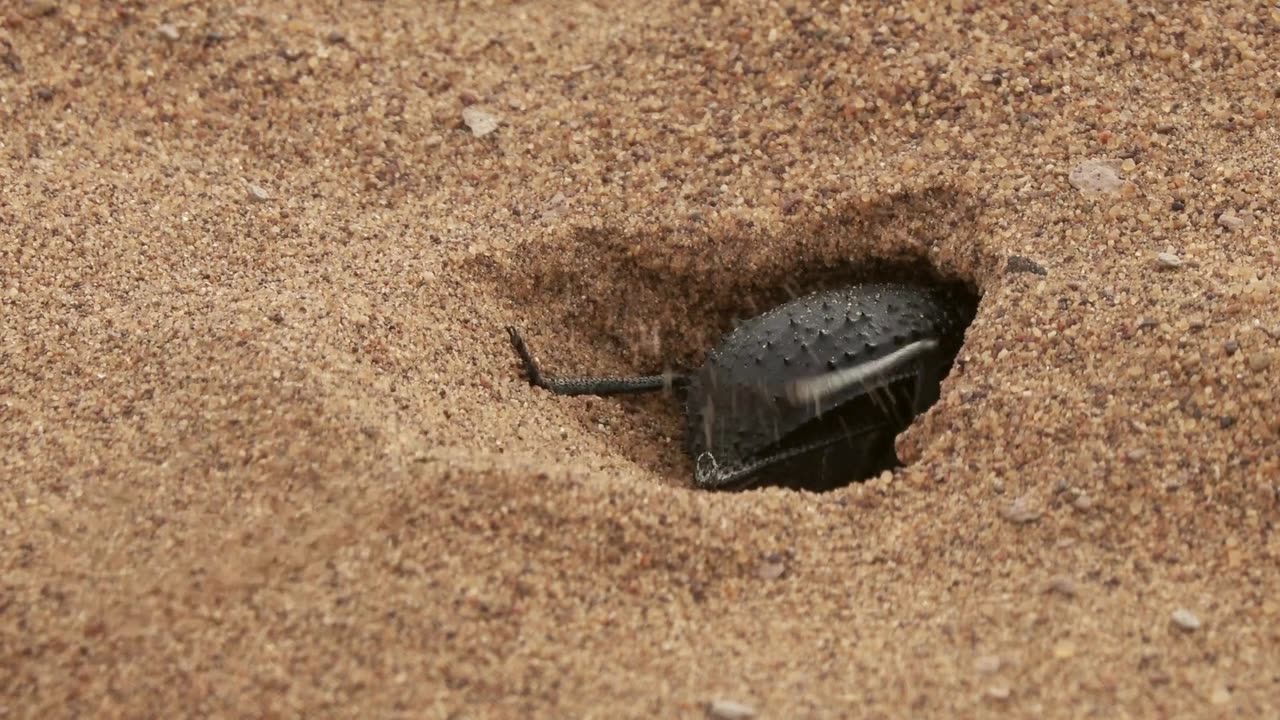Premium Only Content

🌿 Scarab Beetle Unearths Mink in Mesmerizing Sand Dig! 🐜🏜️
🎥 Dive into the fascinating world of scarab beetles as one industrious specimen embarks on an incredible journey beneath the sandy surface. 🌐 Witness the intricate and mesmerizing digging skills of this scarab beetle as it unearths a mysterious mink hidden in the depths of the desert. 🏜️👀 Join us for a captivating adventure into the secrets of nature, where the small but mighty scarab beetle takes center stage. 🐜✨ Don't miss out on this extraordinary display of instinct and survival in the heart of the wilderness! 🌿📽️ #ScarabBeetle #NatureDiscovery #SandDig
Now, let's move on to 10 paragraphs about scarab beetles.
Introduction to Scarab Beetles:
Scarab beetles, belonging to the family Scarabaeidae, are a diverse and intriguing group of insects that play significant roles in various ecosystems worldwide. These beetles are known for their distinctive appearance, with many species showcasing vibrant colors and intricate patterns on their exoskeletons.
Ancient Symbolism:
Scarab beetles hold cultural and historical significance, particularly in ancient Egypt, where they were revered as symbols of regeneration and protection. The scarab beetle's habit of rolling balls of dung was associated with the sun's daily journey across the sky, symbolizing rebirth and the cycle of life.
Ecological Role:
Scarabs contribute to ecosystem health by playing vital roles in nutrient recycling. Many species are involved in breaking down organic matter, such as dung, which not only benefits the beetles but also helps maintain a balanced and healthy environment.
Diverse Species:
The scarab beetle family is incredibly diverse, with over 30,000 known species. These insects inhabit a wide range of environments, from tropical rainforests to arid deserts, showcasing their adaptability to various ecological niches.
Feeding Habits:
Scarab beetles exhibit diverse feeding habits. While some species are detritivores, feeding on decaying organic matter, others are herbivores, consuming plant roots and vegetation. The diversity in their diet reflects their ability to thrive in different ecosystems.
Mating Rituals:
Scarab beetles often engage in fascinating mating rituals. Some species create intricate courtship displays, involving movements and pheromones, to attract potential mates. These rituals highlight the complexity of communication within the insect world.
Protective Armor:
The exoskeleton of scarab beetles serves as a protective armor, providing defense against predators. Some species have evolved to have particularly tough exoskeletons, enhancing their chances of survival in challenging environments.
Nocturnal Behavior:
Many scarab beetles are nocturnal, preferring to be active during the night. This behavior helps them avoid predators and take advantage of cooler temperatures in environments with high daytime temperatures.
Scarabs and Ancient Burials:
In ancient cultures, scarab beetles were often placed in tombs and associated with the afterlife. These symbolic connections reveal the deep cultural significance and beliefs surrounding these insects.
Conservation Concerns:
Despite their ecological importance, some scarab beetle species face threats due to habitat loss and environmental changes. Conservation efforts are crucial to preserving the diversity and ecological roles of these fascinating insects for future generations.
-
 30:21
30:21
Friday Beers
3 hours ago $1.05 earnedOur Brutal Golf Challenge: Hot Wings Roulette
15.5K -
 2:58:40
2:58:40
Barry Cunningham
4 hours agoPRESIDENT TRUMP SPEECH AT MAKING HEALTH TECHNOLOGY GREAT AGAIN! EVENT AND MORE NEWS!
42.5K23 -
 LIVE
LIVE
ZeeroG
2 hours agoStarfield (E.P 4 ) 7/30/25
26 watching -
 1:00:08
1:00:08
The Officer Tatum
4 hours agoLIVE: Left CANCELS Their Own, All White Town, NYC Shooter Update + MORE | EP 146
21.1K24 -
 LIVE
LIVE
Julian Orbit
1 hour agoMy Friendly Neighborhood - First Look
7 watching -
 LIVE
LIVE
TYM LIVE
2 hours agoThey call Me Audio Issues
19 watching -
 LIVE
LIVE
The Rabble Wrangler
15 hours agoRimWorld with The Best in the West!
55 watching -
 LIVE
LIVE
MissesMaam
5 hours agoVariety Stream💚✨
56 watching -
 LIVE
LIVE
blackfox87
1 hour agoHot Droppin! | PREMIUM CREATOR | #DisabledVeteran
41 watching -
 1:23:27
1:23:27
Redacted News
4 hours agoBREAKING! FBI DIRECTOR DROPS BOMBSHELL, REVEALS HIDDEN 'BURN BAGS' AND MISSING EPSTEIN FOOTAGE
140K140